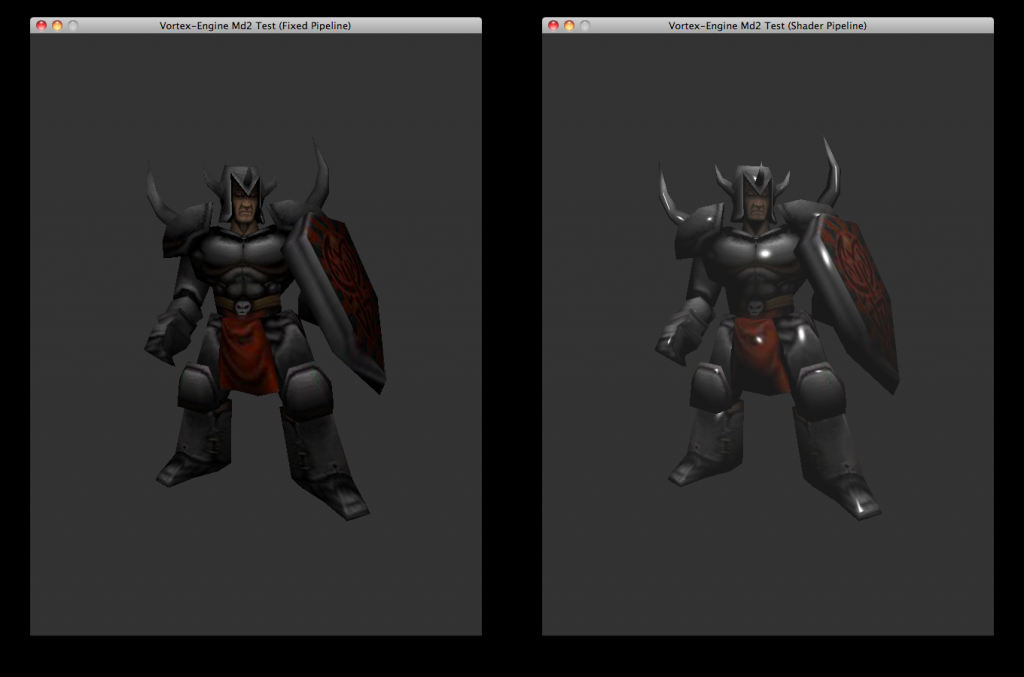Dual Pipeline support in Vortex Engine
Continuing with the news related to the Vortex Engine, I’m glad to announce that the next version of Vortex will come with two separate rendering pipelines: a fixed rendering pipeline and a programmable rendering pipeline that supports custom shader programs.

Supporting two pipelines enables the developer to use the most appropriate rendering pathway for the target device’s capabilities.
Newer video cards for Desktop computers and the latest mobile devices can be programmed for though the programmable pipeline, whereas older devices (such as the original iPhone and the iPhone 3G) can still be supported through the fixed pipeline.
Anyone in the field of Graphics will be able to tell that the fixed pipeline will not be able to provide the exact same visual capabilities as the programmable pipeline, however, it should be less resource intensive and thus more suitable for some older devices.
The programmable pipeline, on the other hand, will allow Vortex applications to leverage the hottest techniques in Computer Graphics such as Bump Mapping, Specular Mapping, Blur and Depth of Field (among others), dramatically improving the visual detail.
This list provides, at a glance, the criteria for selecting the appropriate Vortex rendering pipeline depending on the target device:
- OpenGL 1.1 / OpenGL ES 1.1 devices -> Use Vortex’s Fixed Pipeline
- OpenGL >= 2.0 / OpenGL ES 2.0 devices -> Choose between Vortex’s Fixed Pipeline and Vortex’s Programmable Pipeline (recommended).
Needless to say, we’re very excited about the possibilities that this brings to the table and are very eager to see to what extents can the Vortex Engine be now pushed.
In the picture above you can see a sample comparison between the lightning model of the fixed pipeline (hardware-accelerated Gouraud Shading) and the one that the programmable pipeline offers (hardware-accelerated Phong Shading with specular reflections in this case).
This is just the tip of the iceberg. Stay tuned for more updates on the Vortex Engine!
